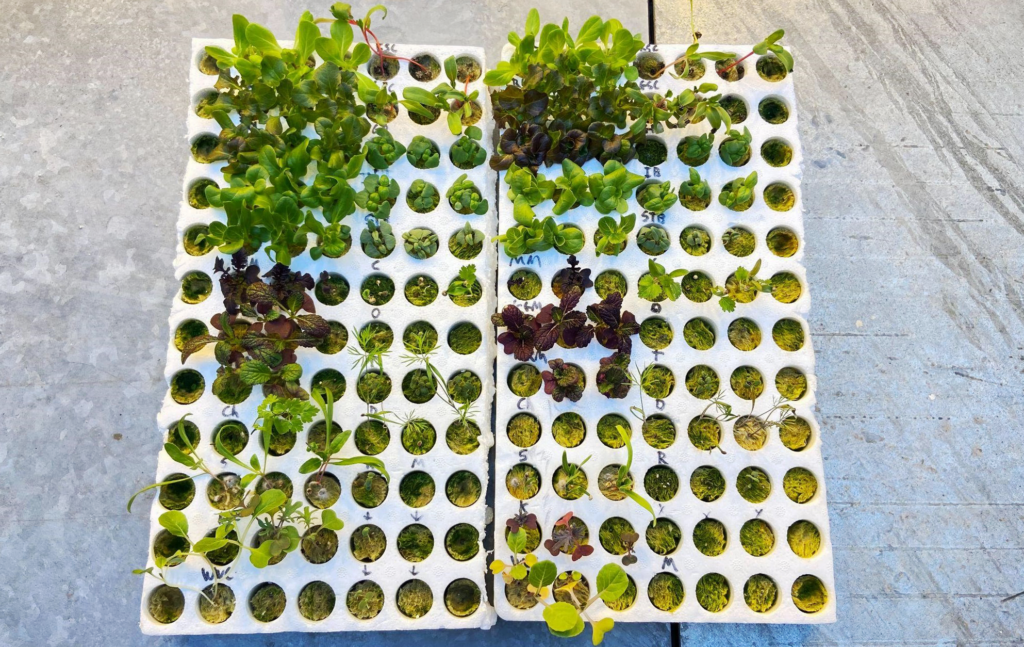
(Photo courtesy of Vineland Research and Innovation Centre)
Challenge: Improving indoor smart gardens for a better consumer growing experience Solution: Identify the ideal growing conditions for various indoor vegetable crops Impact: An improved microgarden pod design lets home gardeners grow vegetables indoors faster and more econonmically
Indoor gardening is becoming increasingly popular with consumers keen to grow their own food sustainably without the use of herbicides or pesticides. It’s a trend accelerated by price increases and supply chain upheavals resulting from the impacts of the COVID-19 pandemic.
Biotechnology company Plantaform Technology Inc. has a solution for budding home indoor gardeners – a prototype microgarden pod that will allow consumers to easily grow a variety of herbs and leafy green vegetables even in a small living space.
The challenge is setting new gardeners up for success so that they can grow quality crops as economically as possible, time after time. The Ottawa-area company knew there were research gaps in determining the best growing conditions for the various crop species their smart gardening system could grow indoors.
Thanks to funding from the Greenhouse Technology Network, Plantaform was able to complete a research project to get the answers it needed. Researchers from Vineland Research and Innovation Centre (Vineland) compared the effects of different light intensities using Plantaform’s LED light boards, as well as the impact different nutrient treatments had on the germination time and initial growth rate of 23 different plant species.
A Conviron chamber was customized to set up four treatments with two different light levels and two different nutrient solutions. Temperature and humidity levels were set to be the same as the environment found inside the Plantaform gardening units. LED light boards were hung inside the chamber to deliver different light intensities to the crops.
Plants were grown in Rockwool plugs using varying fertilizer treatments and were monitored daily for germination and leaf emergence.
“We found different combinations of light and fertilizer levels impacted the germination and seedling growth of the 23 species we trialed,” explains Qinglu Ying, a research scientist at Vineland who worked on the project.
“Thanks to this research, we have improved the lighting control settings and the nutrient concentration regulation of our autonomous indoor garden system for a wide variety of plant species, ensuring reliable and successful germination of our seeded pods and customer satisfaction with our products,” said Luke Kelly,Plantaform’s Head of Research & Development.
This project is funded by the Government of Canada through the Federal Economic Development Agency for Southern Ontario.
Visit Vineland Research and Innovation Centre to learn more about its resources and capabilities.






